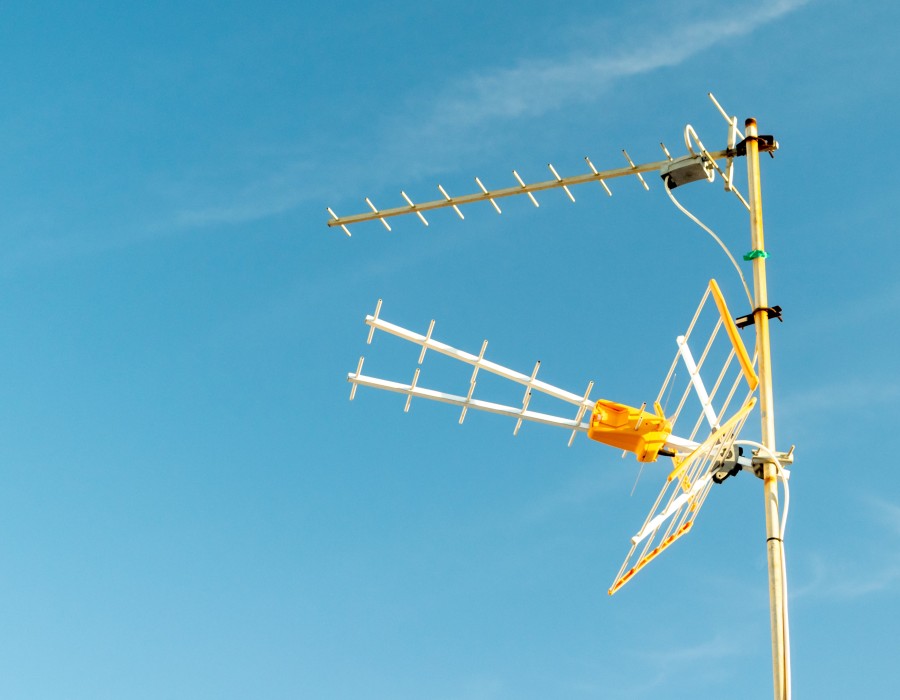When it comes to receiving quality television signals, aerial installation plays a pivotal role. While many homeowners might overlook this aspect, the right installation can significantly enhance signal quality, leading to better viewing experiences. Here’s a detailed look at the key considerations for optimal aerial installation.
1. Location, Location, Location
The placement of your aerial is crucial. Aerials need to be installed in locations where they can receive the best signal, typically high up and away from obstructions. Consider the following:
- Height: Installing the aerial on the roof is often the best option. This height helps reduce interference from buildings, trees, and other obstructions.
- Orientation: Aerials should be pointed in the direction of the nearest transmitter. Research local transmitter locations to ensure proper alignment.
- Surroundings: Be aware of any potential obstructions, such as trees or buildings. If possible, trim any overhanging branches that might block the signal.
2. Choosing the Right Aerial
Not all aerials are created equal. Selecting the appropriate type for your specific needs can make a significant difference in signal quality:
- Indoor vs. Outdoor Aerials: Indoor aerials may be easier to install but often provide inferior signal quality compared to outdoor models. If you live in a signal-rich area, an indoor aerial might suffice; however, outdoor aerials are generally recommended for better performance.
- Type of Aerial: There are various types of aerials, including Yagi, log-periodic, and grid aerials. Research which type is best suited for your region and broadcasting frequency.
3. Consider Signal Amplifiers
In areas with weak signals, a signal amplifier can be beneficial. Here’s what to keep in mind:
- Location of Amplifiers: The amplifier should be installed as close to the aerial and satellite installation as possible to minimize signal loss during transmission.
- Choosing the Right Amplifier: Select an amplifier that matches your needs. Consider the distance between the aerial and your television, as well as any splitters or additional TVs connected to the system.
4. Cabling Matters
The type and quality of the cable used in your installation can significantly affect signal quality. Consider the following:
- Coaxial Cable: Use high-quality coaxial cable designed for TV signals. Look for low-loss options to minimize signal degradation.
- Length of Cable: Keep the cable length as short as possible. Longer runs can lead to signal loss, so plan the installation to reduce unnecessary lengths.
- Avoiding Interference: Keep cables away from electrical wires and devices that may cause interference.
5. Installation Techniques
Proper installation techniques are essential for achieving optimal signal quality. Here are some best practices:
- Secure Mounting: Ensure the aerial is securely mounted to withstand wind and weather conditions. A loose aerial can shift over time, leading to signal loss.
- Avoiding Water Damage: Use weatherproof materials and seal connections to prevent water ingress, which can corrode connections and degrade signal quality.
6. Testing and Adjusting the Signal
Once the installation is complete, testing and adjusting the signal is crucial for achieving the best quality:
- Signal Strength Meter: Use a signal strength meter to evaluate the quality of the signal received. This tool helps in making necessary adjustments to the aerial’s position.
- Fine-Tuning: Adjust the aerial incrementally while monitoring the signal strength. Even small movements can have a significant impact on reception.
7. Regular Maintenance
Maintaining your aerial installation is vital for long-term performance:
- Check for Obstructions: Periodically inspect your aerial for any new obstructions that may have emerged, such as overgrown trees or newly constructed buildings.
- Inspect for Damage: Regularly check the aerial, cabling, and connections for signs of wear and tear. Replace any damaged components promptly to avoid signal degradation.
8. Professional Installation vs. DIY
While many homeowners may consider a DIY approach to aerial installation, professional installation offers distinct advantages:
- Expertise: Professionals have the experience and tools necessary to ensure optimal placement and setup.
- Warranty: Many professional services offer warranties on their work, providing peace of mind.
If you decide to go the DIY route, ensure you follow all safety guidelines, especially if working at heights.
Conclusion
Aerial installation is a vital component in ensuring optimal signal quality for your television viewing experience. By considering the location, choosing the right equipment, and following best practices in installation and maintenance, you can significantly enhance your signal reception. Whether you opt for a professional installer or take on the task yourself, paying attention to these key considerations will lead to a more enjoyable viewing experience. With the right setup, you can enjoy clear, uninterrupted television reception for years to come.





Comments